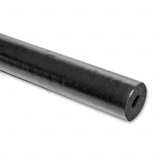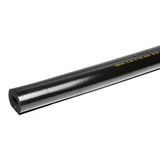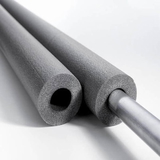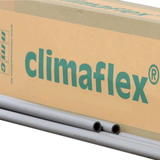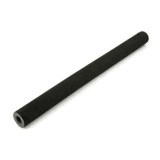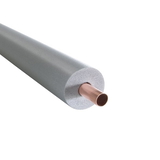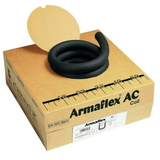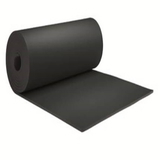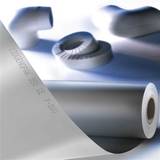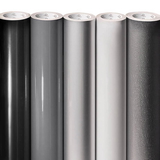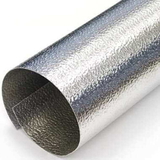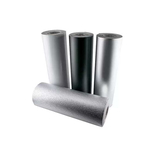- Blogs
- A Comprehensive Guide to External Pipe Insulation
A Comprehensive Guide to External Pipe Insulation

TLDR: Insulating your exterior, outdoor pipes (also known as pipe lagging) is vital for preventing freezing, saving energy, and reducing condensation. This guide covers the best lagging for outside pipes, UK standards, waterproof options, and cladding requirements to help you protect your pipework and improve efficiency.
Introduction: The Importance of External Pipe Lagging in the UK
External pipe insulation, also referred to as exterior pipe insulation or outdoor pipe lagging, the practice of applying a protective layer around pipes located outside or in unheated areas of a building, is an increasingly significant consideration in the UK.
The UK's variable climate, characterised by cold winters and increasingly warm summers, alongside a growing emphasis on energy efficiency and sustainability, makes effective outside pipe insulation a crucial element in both residential and commercial properties.
This comprehensive guide aims to provide UK readers, including homeowners and building professionals, with a thorough understanding of external pipe insulation.
We will look into the numerous benefits it offers, the various materials available, the best practices for ensuring proper installation, the relevant UK standards and regulations that govern its use, how to identify waterproof insulation solutions, and the necessary cladding requirements for different insulation types.
By addressing these key aspects, this article seeks to equip readers with the knowledge needed to make informed decisions and implement effective outdoor pipe insulation strategies.
Why Insulate External Pipes? Understanding the Benefits
The application of insulation to exterior pipework yields a multitude of benefits, addressing issues ranging from preventing costly damage to enhancing energy efficiency and improving overall system performance.
Preventing Freezing and Bursting
One of the most critical advantages of external pipe insulation in the UK context is its ability to prevent pipes from freezing and subsequently bursting. Water expands by approximately 9% when it freezes.
This expansion generates immense internal pressure within the confines of a pipe, which can easily exceed the pipe's structural capacity, leading to cracks, splits, and ultimately, bursts. This is a particularly pertinent concern during the UK's winter months when temperatures frequently plummet to or below freezing point. 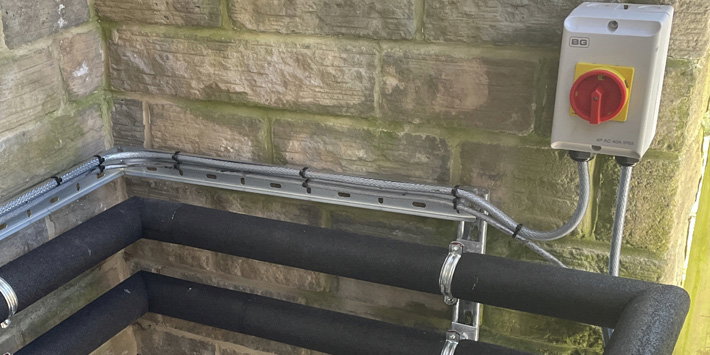
Outside pipe insulation acts as a thermal barrier, impeding the flow of heat away from the water within the pipe to the cold surrounding environment. By slowing down this heat loss, insulation prevents the water inside the pipes from reaching its freezing point, or at least delays this process significantly, providing crucial protection during short cold spells.
Wessex Water, in their guidance on pipe lagging, explicitly states that its purpose is to prevent pipes exposed to cold temperatures from freezing and bursting when temperatures drop below 0°C.
This protection is vital not only for the integrity of the pipework itself but also to prevent the significant disruption and potential water damage that can result from burst pipes. Using insulation for pipes to prevent freezing is a no brainer.
It is essential to apply insulation to all exterior pipes, including those situated in areas that may not be consistently heated or are exposed to the elements, such as pipes in garages, barns and outbuildings.
These locations are often more susceptible to freezing temperatures. However, it's important to recognise, as highlighted by research , that insulation slows down heat transfer but does not eliminate it entirely.
Therefore, selecting the appropriate thickness of insulation based on the expected minimum temperatures and the duration of cold periods typical for the specific UK region is crucial for effective freeze protection.
In areas prone to prolonged and severe freezing conditions, considering supplementary measures such as trace heating cables alongside insulation may offer an additional layer of security.
Minimising Heat Loss and Saving Energy
Beyond preventing freezing, outdoor pipe lagging plays a significant role in minimising heat loss from hot water pipes, leading to substantial energy savings and reduced heating costs.
When hot water travels through uninsulated external pipes, a considerable amount of its thermal energy is transferred to the colder surrounding air, effectively wasting the energy used to heat the water in the first place. Exterior pipe lagging acts as a barrier, significantly reducing this heat transfer and ensuring that the hot water reaches its intended destination, whether an outdoor tap or an external heat pump unit, at a higher temperature, thus requiring less energy to maintain the desired heat level.
The benefits of this heat loss reduction are twofold: it conserves energy, leading to lower fuel consumption for boilers or other heating systems, and it directly translates into reduced energy bills for both homeowners and businesses.
This is particularly relevant for outside hot water supply pipes and for central heating system pipes that might have external sections, especially in modern, energy-efficient systems like heat pumps. By keeping the heat within the pipes, insulation improves the overall energy efficiency of the heating system.
While some might argue, particularly in the context of indoor pipes, that heat lost from pipes contributes to warming the house , this logic does not hold for truly external pipework.
Any heat dissipated from outdoor pipes is lost entirely to the environment and represents wasted energy. Given the increasing focus on energy conservation and rising energy costs in the UK, investing in effective external pipe insulation is a sound economic decision that contributes to both reduced operational expenses and a lower carbon footprint.
Reducing Condensation and Corrosion
Another key advantage of insulating external pipes, particularly cold water lines, is the reduction of condensation and the prevention of corrosion. When cold water flows through an uninsulated exterior pipe, the surface of the pipe can become significantly cooler than the surrounding air, especially in the warmer and more humid conditions that can occur even during milder UK weather.
This temperature difference causes moisture in the air to condense on the cold pipe surface, leading to dripping, dampness, and potentially the formation of mould and mildew on nearby surfaces. This condensation can also contribute to structural damage over time, especially if it occurs within confined spaces or in contact with building materials susceptible to moisture like wood.
External pipe insulation helps to mitigate this issue by creating a thermal barrier that keeps the surface temperature of the cold water pipe closer to the temperature of the water inside. This prevents the pipe surface from becoming cold enough for condensation to form, thus protecting surrounding areas from moisture damage and inhibiting mould growth.
Furthermore, the presence of moisture on metal pipes, such as copper and steel commonly used in plumbing systems, can lead to corrosion over time, weakening the pipe material and potentially causing leaks. By providing a dry, protective layer around the pipes, insulation acts as a barrier against this corrosive moisture, helping to prolong the lifespan of the pipework.
Noise Reduction
While not a primary benefit, external pipe lagging can also contribute to a reduction in noise generated by water flowing through the pipes.
The insulation material acts as a dampening layer, absorbing some of the vibrations and sound waves produced by the movement of water, which can be particularly noticeable in exposed outdoor pipe runs or where pipes pass through walls or other building elements.
This noise reduction can contribute to a more comfortable and less disruptive environment, especially if exterior pipes are located near living or working spaces.
In conclusion, external pipe insulation offers a comprehensive solution to a range of problems associated with external pipework in the UK. From preventing the damaging effects of freezing to improving energy efficiency, reducing condensation and corrosion, and even dampening unwanted noise, the benefits of insulating outside pipes are significant and contribute to the longevity, performance, and overall sustainability of building services.
Choosing the Right Insulation Materials
Selecting the appropriate exterior water pipe insulation material in the UK is crucial for achieving the desired benefits and ensuring long-term performance. A variety of materials are available, each with its own set of properties, advantages, and disadvantages. 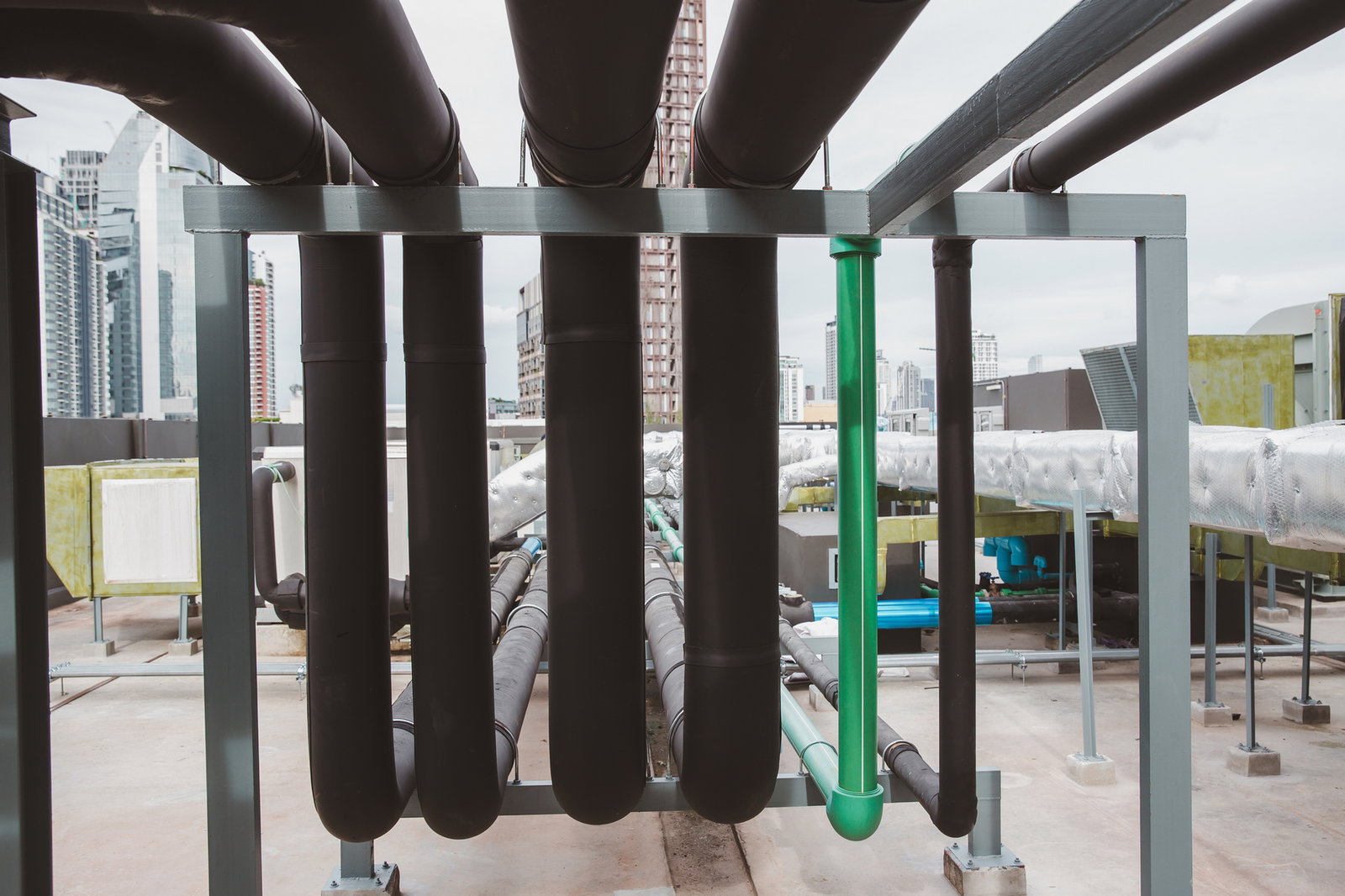
Elastomeric Nitrile Rubber Insulation
Elastomeric nitrile rubber, such as K-Flex Self-Seal products, offers excellent thermal conductivity and moisture resistance, making it ideal for use as external water pipe insulation. This flexible, durable material withstands high temperatures while resisting water, oil, and ozone.
Its key advantages include good thermal and acoustic properties, easy installation (particularly with self-adhesive closure systems), and suitability for both hot and cold water pipes, refrigeration, air conditioning, and solar heating systems.
However, elastomeric materials typically require UV protection when used externally, as prolonged sun exposure can degrade the material.
Mineral Wool Pipe Insulation
Mineral wool insulation is a rigid, fire-resistant material that performs exceptionally well at high temperatures. Products like Isover Clim Pipe with aluminium facing provide extra protection and reflect radiant heat. Mineral wool insulation offers excellent fire resistance properties and resistance to moisture, mould, and vermin.
It is ideally applied for steam pipes, process pipes, and fire protection systems. ROCKWOOL offers specific pipe insulation products that help maintain desired temperatures in both hot and cold water pipes while reducing energy consumption.
However, when used outdoors, mineral wool requires protective cladding as it's not resistant to moisture and if it gets wet, which it will if its exposed to rain, it will soak up water like a sponge and no longer insulate. Proper cladding when using mineral wool lagging is paramount.
Polyethylene Foam Insulation
Polyethylene foam insulations like Climaflex provide cost-effective solutions with good thermal properties. These products are lightweight and easy to cut and install, making them suitable for a wide range of applications and cost-effective for large-scale installations.
Armaflex Tuffcoat and Stornch are specifically designed for use as outside pipe lagging, combining Class O Nitrile Foam insulation with a wrap-around self-seal plastic coating.
This makes it highly resistant to mechanical impact and waterproof when properly installed and sealed. It is capable of withstanding harsh weather conditions and is ideal for buried mains cold water pipes or ground source heat pump pipes.
Phenolic Foam
Phenolic foam is a rigid, closed-cell insulation material known for its exceptionally low thermal conductivity, providing excellent insulation performance with relatively thin layers. It also offers good fire resistance.
While its closed-cell structure provides good resistance to moisture ingress , it is not considered entirely waterproof and can be damaged by prolonged or significant water exposure.
For exterior applications, phenolic foam insulation requires protection from UV radiation and physical damage through the use of appropriate cladding materials such as aluminium or PIB.
Despite this requirement for cladding, phenolic foam has gained popularity in the UK due to its excellent thermal performance and fire safety characteristics.
UK Standards and Regulations for External Pipe Insulation
In the UK, several standards and regulations govern the use of external pipe insulation, primarily focusing on energy efficiency and safety. Adhering to these guidelines is essential for ensuring compliance and maximising the benefits of insulation.
Key Standards and Regulatory Bodies
The main standards governing pipe insulation in the UK include:
- Building Regulations Part L - Conservation of Fuel and Power: Sets requirements for energy efficiency in buildings, including pipe insulation standards.
- EN 12828 - Heating Systems in Buildings: Provides specifications for heating systems, including insulation requirements.
- BS 5422 - Specification of Thermal Insulating Materials: Outlines material specifications and performance requirements. The latest version is BS 5422:2023.
- BS 5970 - Thermal Insulation of Pipework and Equipment: Comprehensive standard for insulation applications.
- HSE Guidance on Corrosion Under Insulation (CUI): Addresses prevention of corrosion beneath insulation materials.
Recent Regulatory Changes
Recent updates to the National House Building Council guidelines have introduced stricter requirements : 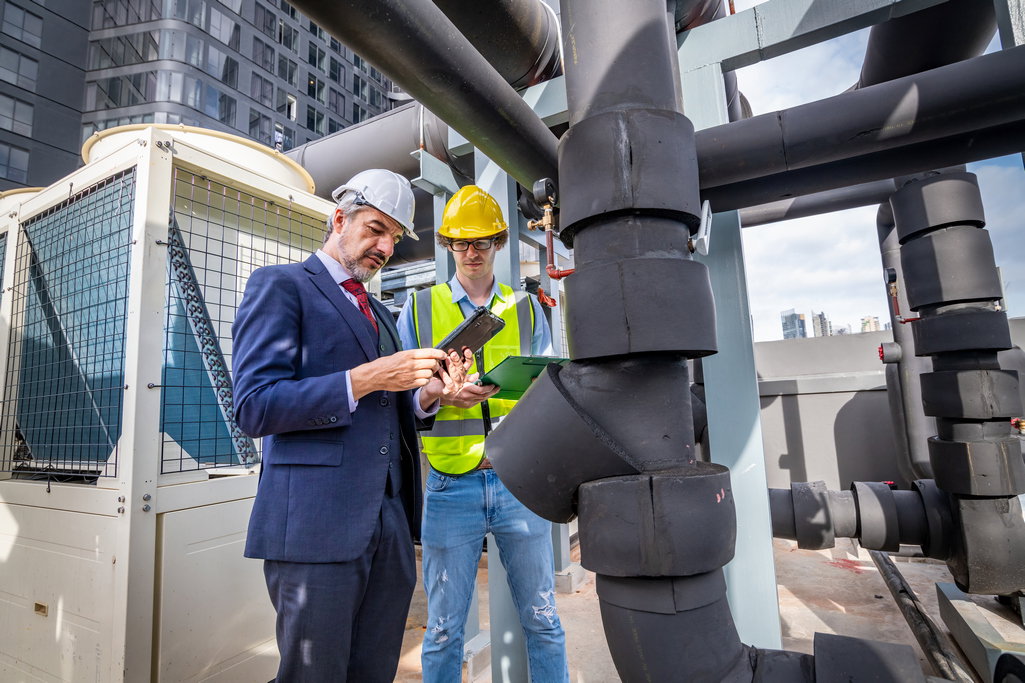
- Mandatory insulation for space heating pipes in intermediate floor voids.
- Required insulation for pipes passing through unheated areas such as garages, attic voids, and exterior wall cavities.
Compliance Requirements
External pipe insulation in the UK must meet specific thickness and performance criteria based on :
- Pipe diameter.
- Operating temperature.
- Location (indoor, outdoor, exposed to elements).
- Purpose (heating, cooling, water supply).
For systems that cannot achieve the full standard U-value of 0.3 due to space constraints, page 26 of Approved Document L Volume 1 suggests implementing the best possible insulation within practical limitations.
Waterproof Pipe Insulation Solutions
For outdoor pipe insulation in the UK, particularly in locations exposed to rain, the use of waterproof materials is essential to maintain thermal performance and prevent damage.
Moisture ingress into insulation can significantly reduce its effectiveness and lead to corrosion of the pipes.
There are products on the market which are specifically designed to be used as outdoor water pipe insulation. Read on to find out about these.
Specific Waterproof External Pipe Insulation Products
Certain commercially available products are specifically designed and marketed as waterproof pipe insulation. Examples include Armaflex Tuffcoat, which features a built-in PVC coating, and Stornch Outdoor Pipe Insulation, which is also PVC coated. These products offer a convenient all-in-one solution for weather protection.
Properties of Waterproof pipe lagging
Waterproof pipe insulation is characterised by its ability to resist water absorption and penetration, ensuring that the insulation material remains dry and continues to provide its intended thermal resistance even when exposed to rain, snow, or persistent humidity.
A key property that contributes to this waterproofness is a closed-cell structure. In closed-cell insulation, the individual cells within the material are sealed and do not interconnect, which severely restricts the movement and absorption of water compared to open-cell structures where water can easily permeate the material.
Many products combine this property with a PVC cladding such as Stornch and Armaflex tuffcoat to make truly waterproof pipe lagging.
Waterproof Materials and Products
Several products offer excellent waterproofing capabilities:
- Elastomeric Rubber (Nitrile): Nitrile closed-cell elastomeric rubber insulation exhibits excellent water resistance due to its inherent material properties and closed-cell structure.
- Polyethylene Foam (with protective layers): While standard polyethylene foam has good moisture resistance as a closed-cell material , for prolonged external exposure, especially to UV, it is recommended to opt for products that have a factory-applied protective, weatherproof, and UV-resistant coating or to use an additional exterior cladding to enhance their durability.
- Phenolic Foam (with cladding): Phenolic foam, with its closed-cell structure, offers good initial resistance to moisture. However, it is not considered entirely waterproof on its own and can be susceptible to damage from prolonged or significant water exposure. Therefore, for outdoor applications, using a high-quality, fully waterproof cladding system (such as aluminium, PIB, ventureclad) is essential to protect the phenolic foam core and ensure long-term performance.
Closed-cell foams, in general, provide a higher degree of waterproofing compared to open-cell or fibrous insulation materials like mineral wool or fibreglass, which typically require additional barriers to achieve waterproof performance.
When selecting outside water pipe insulation, it is crucial to consider the level of exposure to moisture and choose a material with appropriate water resistance properties or plan to use a suitable weatherproofing solution.
Cladding Requirements for Different Insulation Materials
Cladding is a protective outer layer applied over pipe insulation, particularly when used externally. It serves several important functions, including weather protection, resistance to physical damage, and aesthetic enhancement.
The type of cladding required often depends on the insulation material used and the specific environmental conditions. For materials that are not inherently waterproof, such as mineral wool and standard polyethylene foam, or those that require additional UV protection like nitrile rubber and phenolic foam, cladding is essential for longevity and performance in external UK applications.
Types of Cladding Materials
Several materials are commonly used for cladding external pipe insulation in the UK: 
- Aluminium: A popular choice due to its lightweight nature, excellent corrosion resistance, and ability to act as a moisture barrier. It is the best cladding to be used in areas prone to mechanical damage such as where pipes run along roof tops where they could be walked on.
- PIB (Polyisobutylene): Known for its exceptional waterproofing properties and flexibility, making it suitable for complex pipework.
- PVC (Polyvinyl Chloride): A cost-effective option offering good protection against moisture, chemicals, and physical damage, often used in products like Isogenotec.
- Aluzinc: Very tough cladding for the most demanding of applications where proetction from damage is crucial. Offers superior corrosion resistance compared to galvanised steel, suitable for harsh environments.
- 5 ply laminate (e.g., Klasseclad, Proclad, Ventureclad): These multi-layered laminate systems, often self-adhesive, provide excellent weatherproofing, UV resistance, and mechanical protection.
Cladding Recommendations Based on Insulation Material
- Mineral Wool: For external applications, mineral wool insulation typically requires a robust and weatherproof cladding such as aluminium, PIB, or a 5 ply laminate like Klasseclad, Proclad, or Ventureclad to protect it from moisture and UV degradation.
- Polyethylene Foam: While some external-grade polyethylene foams exist, standard polyethylene foam used outdoors generally benefits from a UV-resistant cladding like aluminium, PIB, or specialised PVC or polyethylene-based jacketing, including 5 ply laminates, to prevent degradation.
- Elastomeric Rubber: Nitrile rubber insulation typically requires UV protection in external applications, which can be provided by UV-resistant paints or claddings like aluminium or PIB rubber. If you opt for a
- Phenolic Foam: Due to its vulnerability to UV and potential water damage, phenolic foam used externally necessitates a durable and fully sealed cladding system, typically made of aluminium, PIB, or 5 ply laminates.
Lifespan and Maintenance of External Pipe Insulation
The longevity of external pipe insulation depends on several factors, including the material quality, environmental conditions, and proper maintenance. Regular inspections are crucial to identify and address any issues that may arise.
Factors Affecting Lifespan
The lifespan of external pipe insulation is influenced by the inherent durability of the material, the severity of environmental exposure (UV radiation, temperature fluctuations, moisture), and the quality of the installation and any protective cladding used.
Recommended Maintenance Practices and Inspection Tips
Regular visual inspections should be conducted at least annually for most external pipe insulation materials. Look for signs of physical damage such as tears, punctures, or compression, as well as any gaps or separations between insulation sections. Check for evidence of moisture ingress, including discolouration, staining, or the presence of mould or mildew.
Also, inspect for any signs of pest infestation. Address any issues promptly by resealing joints, patching holes with compatible materials, or replacing damaged sections of insulation.
Cost-Effectiveness and Environmental Impact of External Pipe Insulation
Investing in external pipe insulation offers significant long-term cost savings and environmental benefits.
Initial Costs vs. Long-Term Savings
The initial cost of insulation materials and installation will vary depending on the type and thickness of insulation and the extent of the pipework.
However, the long-term energy savings from reduced heat loss and the prevention of costly damage from freezing and corrosion can result in a relatively short payback period, often within a few years.
Estimates in the UK suggest that pipe lagging can save around £3 per year per metre , with a typical payback within a couple of years, making it a cost-effective investment.
Environmental Benefits of Reduced Energy Consumption
Effective external pipe insulation plays a crucial role in reducing energy consumption for heating water, which leads to a lower demand for fossil fuels and a subsequent decrease in greenhouse gas emissions. This aligns with the UK's commitment to achieving net-zero emissions.
Sustainability Considerations of Different Insulation Materials
Mineral wool insulation often incorporates recycled materials and has a lower embodied energy compared to many other insulation options.
Polyethylene and other plastic-based insulations are derived from petrochemicals. Elastomeric rubber insulation can be a more sustainable option compared to rigid insulations.
Phenolic foam offers high thermal efficiency and fire resistance but has environmental considerations related to its manufacturing process.
Table 1 provides a comparison of the key external pipe insulation materials discussed:
| Material Type | Key Properties | Typical External Pipe Applications | Advantages | Disadvantages | Recommended Cladding |
| Elastomeric Nitrile Rubber | Flexible, durable, excellent moisture resistance | Hot and cold water pipes, refrigeration and air conditioning pipes, solar heating systems | Good thermal, fire and acoustic insulation properties, easy to install | Can be expensive. Requires waterproof protection for external use, will soak up water if not protected. | UV-resistant paint or PIB / PVC cladding |
| Elastomeric Nitrile Rubber with factory applied PVC | As above but with PVC waterproof coating pre applied | As above | As above and its completely waterproof | More expensive than standard nitrile rubber and a little less flexible. | None needed as it is factory applied |
| Mineral Wool | Good thermal performance, excellent fire resistance, some moisture resistance | Hot and cold water pipes, heating systems, industrial pipework | Excellent fire resistance, can use recycled content | Can absorb moisture in bulk, requires vapour barrier/cladding for optimal outdoor use | Aluminium, PIB, 5 ply laminate |
| Polyethylene Foam | Flexible, lightweight, cost-effective, good moisture resistance | Domestic hot and cold water pipes, frost protection, buried pipes (Armaflex Tuffcoat) | Cheapest, Cost-effective, easy to install, good condensation resistance | Susceptible to UV degradation, potential shrinkage at low temperatures | UV-resistant cladding, Aluminium, PIB, 5 ply laminate |
| Phenolic Foam | Very low thermal conductivity, excellent fire resistance, good moisture resistance | Heating and ventilation pipes, chilled water pipes, district heating and cooling systems | Superior thermal performance, excellent fire resistance, lightweight | Not fully waterproof, requires cladding for UV and physical protection, can be brittle | Aluminium, PIB, 5 ply laminate |
Table 2 provides a simplified guide to minimum insulation thicknesses for domestic heating and hot water pipes based on the UK Building Regulations Part L:
| Pipe Outside Diameter (mm) | Insulation Thermal Conductivity (W/m.K) | Minimum Insulation Thickness (mm) |
| 15 | 0.025 | 9 |
| 15 | 0.035 | 15 |
| 15 | 0.040 | 20 |
| 22 | 0.025 | 11 |
| 22 | 0.035 | 18 |
| 22 | 0.040 | 23 |
| 28 | 0.025 | 12 |
| 28 | 0.030 | 20 |
| 28 | 0.040 | 25 |
Conclusion: Ensuring Long-Term Protection and Efficiency with External Pipe Insulation
External pipe insulation is a vital component for maintaining the efficiency and integrity of building services in the UK. Its benefits extend from preventing the disruptive and costly damage caused by freezing pipes to significantly reducing energy consumption and contributing to environmental sustainability.
Selecting the appropriate insulation material, whether elastomeric nitrile rubber, mineral wool, polyethylene foam, or phenolic foam, depends on the specific application requirements and the level of environmental exposure.
Adhering to best installation practices, including proper preparation, fitting, and sealing, is crucial for maximising the insulation's effectiveness. Furthermore, understanding and complying with UK standards and regulations, such as Part L of the Building Regulations and BS 5422, ensures that installations meet the required levels of energy efficiency and safety.
For exposed outdoor pipework, choosing waterproof insulation materials or using appropriate cladding is essential for long-term performance and protection against the UK's diverse weather conditions.
By investing in high-quality external pipe insulation and maintaining it properly, homeowners and building professionals in the UK can ensure long-term protection for their pipework, reduce energy costs, and contribute to a more sustainable built environment.

Samuel Hitch
Managing Director
Buy Insulation Online.
Leave A Reply
Your feedback is greatly appreciated, please comment on our content below. Your email address will not be published. Required fields are marked *
